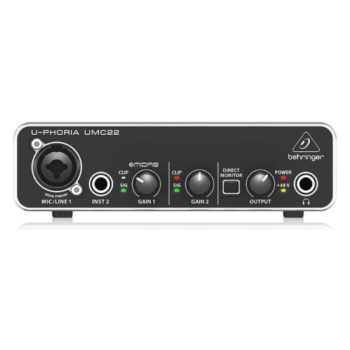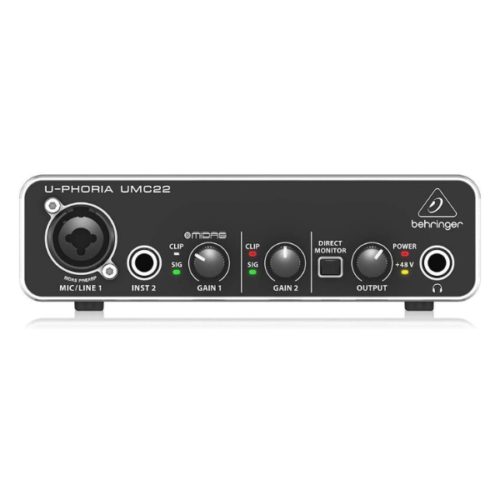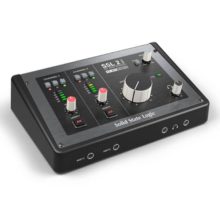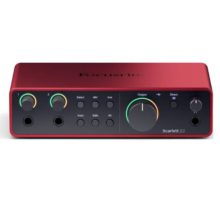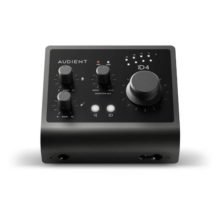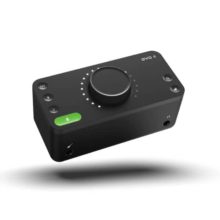The Behringer UMC22 stands as one of the most controversial yet popular entries in the ultra-budget audio interface market. At less than ₹6,000 in India, it represents the absolute minimum investment required to enter the world of professional audio recording. Yet it comes with significant trade-offs that potential buyers must carefully consider.
Build Quality and Design
Physical Construction
The UMC22 gives you an all-metal chassis construction at this price point. A good feature, considering everyone else offers those plastic boxes at this price. Thus, weighing in at a substantial amount for its size, it feels more premium than its price suggests. The minimalist front panel design is refreshingly clean as compared to feature-heavy competitors.
Control Layout
The interface features a logical layout with dual gain knobs, direct monitor switch, and master volume control on the front panel. The 48V phantom power switch is relegated to the rear, which some users find inconvenient for frequent switching.
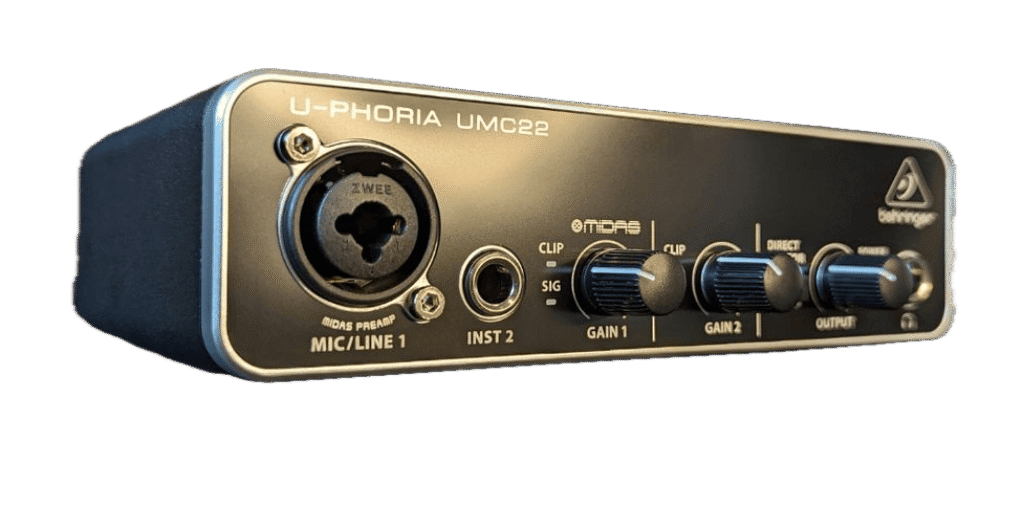
Build Quality Concerns
While the metal construction impresses, users report that the control knobs feel loose and wiggle, suggesting cost-cutting in internal components. Long-term reliability questions persist, as Behringer’s budget reputation precedes this product.
Technical Specifications
Core Specifications
- 2×2 USB 2.0 interface
- 16-bit/48kHz maximum resolution
- 1 MIDAS-designed preamp (mic/line combo input)
- 1 Hi-Z instrument input
- USB bus powered
- Zero-latency direct monitoring
The MIDAS Advantage
The standout feature is the MIDAS-designed preamp, borrowed from Behringer’s acquisition of the legendary British console manufacturer. This represents a significant upgrade over the XENYX preamps found in the cheaper UM2.
Performance Analysis
Audio Quality
Preamp Performance: The MIDAS preamp delivers surprisingly good results for the price. Users report clean recordings with minimal distortion even when recording hot at -3dB, something that cheaper interfaces often struggle with.
Noise Floor Issues: This is where the Behringer UMC22’s budget nature becomes apparent. Audio Science Review measurements reveal a THD+N of -83.5dB and elevated noise floor below 100Hz. Real-world users report audible whine and noise, particularly in electrically noisy environments.
Dynamic Range Limitations: The 16-bit resolution provides adequate quality for podcasting and streaming but falls short of modern 24-bit standards. This limits dynamic range and creates issues when gain staging.
Connectivity and I/O
Input Performance:
- Microphone input: Performs well with condenser mics requiring phantom power
- Instrument input: Adequate for direct guitar recording, though the DI quality is “not that great”
- Gain staging: Users often need to run gain at 70-80% for soft speakers, introducing more noise
Output Performance:
- Monitoring limitation: Single volume control for both headphones and monitors means no independent level adjustment
- Line outputs: Clean and adequate for studio monitors
- Headphone amplifier: Surprisingly powerful, capable of driving 250Ω headphones like the Beyerdynamic DT990 Pro
Driver and Compatibility Issues
The ASIO4ALL Problem: The UMC22’s biggest weakness is its lack of dedicated ASIO drivers on Windows. Users must rely on ASIO4ALL, which creates multiple issues:
- Inconsistent performance across different Windows versions
- Higher latency compared to interfaces with native drivers
- Windows 11 compatibility problems
- Audio dropout issues and stability concerns
Mac Compatibility: Works better on macOS with class-compliant drivers, though some users report issues with Pro Tools recognition.
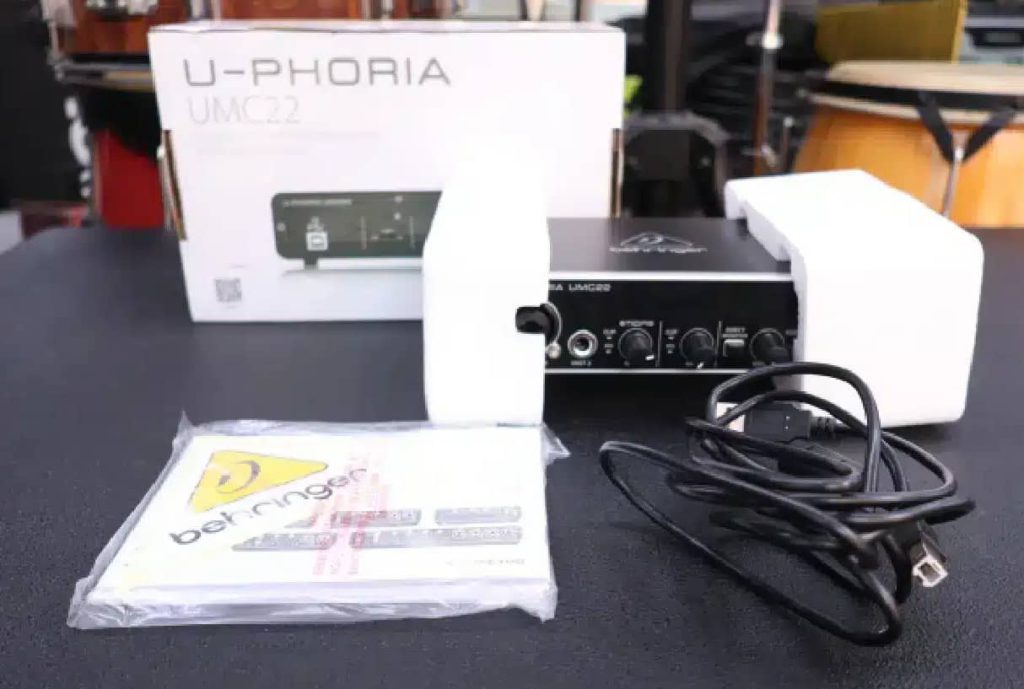
Real-World Usage Scenarios
Podcasting and Streaming ⭐⭐⭐⭐
Excellent value for content creators needing basic XLR connectivity. The MIDAS preamp provides clean vocals, and the 16-bit/48kHz resolution is perfectly adequate for spoken word content.
Music Recording ⭐⭐⭐
Serviceable for beginners but limitations become apparent quickly. The 16-bit depth and single input restrict serious music production capabilities.
Guitar Recording ⭐⭐⭐
Adequate for amp simulation workflows. Users report getting “great guitar tones going direct with amp sim”, though the instrument input quality isn’t exceptional.
Professional Applications ⭐⭐
Not recommended for professional work due to driver reliability issues and technical limitations.
Comparison with Competitors
vs. Behringer UM2: UMC22 offers MIDAS preamps vs. XENYX and better build quality for a modest price increase.
vs. M-Audio M-Track Solo: M-Audio provides native drivers and 24-bit recording but costs more.
vs. Focusrite Scarlett Solo: Significantly more expensive but offers professional reliability and 24-bit recording.
Final Verdict on the Behringer UMC22
Recommended For:
- Podcasters and streamers needing basic XLR connectivity
- Complete beginners wanting to test audio recording without major investment
- Budget-conscious content creators prioritizing cost over features
- Secondary/backup interface applications
Avoid If:
- You need rock-solid reliability for professional work
- 24-bit recording is important for your workflow
- You require multiple simultaneous inputs
- You’re on Windows 11 and can’t troubleshoot driver issues
- You want long-term expandability
Bottom Line
The UMC22 proves that good audio doesn’t have to be expensive, but it requires accepting limitations and potential troubleshooting. For its intended market – ultra-budget conscious beginners – it delivers remarkable value. However, users who can stretch their budget to the PreSonus AudioBox USB 96 (₹10,925) or Audient EVO 4 (₹15,190) will get significantly better long-term value with fewer compromises.
The Behringer UMC22 is impressive for what it costs, but limited by what it costs.
Price point
Behringer UMC22 Audio Interface
Common Problems and Solutions
Audio Coming from One Channel
Widespread issue where audio appears only in the left channel. Solution: This is often a Windows audio routing problem rather than hardware failure.
High Gain Requirements
Users frequently need 70-80% gain for adequate levels. Solution: Get closer to the microphone or consider gain staging with external preamp for serious recording.
Ground Noise and Buzzing
Common complaint about electrical noise and ground loops. Solutions:
- Use balanced connections where possible
- Isolate from electromagnetic interference sources
- Consider ground loop isolators for severe cases
Windows Driver Issues
Persistent problems with ASIO4ALL stability. Solutions:
- Try alternative Behringer drivers from older models
- Consider the UMC202HD for native ASIO support
- Switch to Mac if possible for better compatibility

